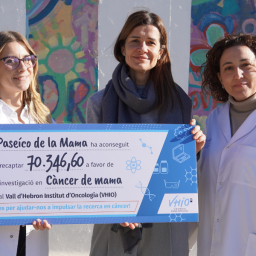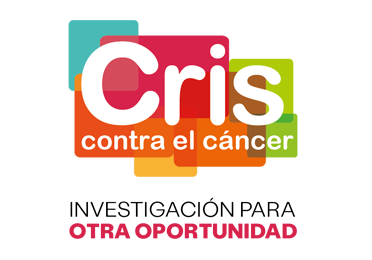
• Endocrine therapy is a type of cancer treatment that slows or halts the growth of hormone-sensitive cancers and is the standard treatment in estrogen receptor-positive and HER2-negative (ER+/HER2-) breast cancer. Most of these tumors eventually develop drug resistance, representing an unmet clinical need. Next-generation oral selective estrogen receptor degraders (SERDs) are showing increasing promise in bolstering the treatment paradigm for ER+/HER2- breast cancer.
• The phase II SERENA-2 randomized, multi-dose clinical trial compared the efficacy of next-generation SERD camizestrant (developed by AstraZeneca) with fulvestrant.
• Published in The Lancet Oncology, data show that in the overall population, camizestrant significantly reduced the risk of disease progression or death by 42% at the 75mg dose and by 33% at 150mg, versus fulvestrant.
Published in The Lancet Oncology1 findings from the randomized, multi-dose phase II SERENA-2 trial show that camizestrant, a next generation selective estrogen receptor degrader (SERD) developed by AstraZeneca, significantly improved progression-free survival (PFS) versus fulvestrant in patients with estrogen receptor-positive and HER2-negative (ER+/HER2-) breast cancer.
These results were previously presented as late breaking data at the 45th annual San Antonio Breast Cancer Symposium® (2022 SABCS®) by first author Mafalda Oliveira, Senior Consultant of the Vall d’Hebron University Hospital’s Medical Oncology Department and a Clinical Investigator of VHIO’s Breast Cancer Group.
Female breast cancer is the second leading cause of global cancer incidence in 2022, with an estimated 2.3 million new cases, comprising 11.6% of all cancer cases2. Approximately 70% of all breast cancers are ER+ and HER2-.
Therapies targeting the estrogen signaling axis, including aromatase inhibitors (AIs), selective estrogen receptor modulators (SERMs), and selective estrogen receptor degraders/down-regulators (SERDs) continue to be the cornerstone of therapy for patients diagnosed with ER+ breast cancer. Despite their significant impact on the management of this disease, cancer drug resistance to existing treatments remains a major obstacle in achieving more durable responses.
“These tumors commonly acquire a mutation in the ER gene, ESR1. SERDs such as fulvestrant can block ER activity in these cases,” said Mafalda Oliveira, corresponding author of this present study.
“Given that ESR1-mutated cancers have constitutive activation of ER and worse prognosis, we need to develop more effective treatment strategies for this patient population. Orally bioavailable SERDs that can antagonize and degrade ER are currently under development, including camizestrant. Our data point to the promise of this next-generation SERD toward improving treatment outcomes in this setting, potentially beyond ESR1-mutated cancers,” added Oliveira.
Coordinated internationally by Mafalda Oliveira, SERENA-2 is the first phase II trial to evaluate a next-generation SERD at several dose levels versus fulvestrant in post-menopausal women with advanced ER+ HER2- breast cancer with disease recurrence or progression after prior endocrine therapy.
“Results of this study show that treatment with oral camizestrant at both 75 and 150 milligram dose levels achieved statistically significant and clinically meaningful benefit in progression free survival in patients with and without ESR1 mutations, and was well tolerated,” observed Mafalda Oliveira, co-developer of this new drug.
In the overall study population, camizestrant significantly reduced the risk of disease progression or death by 42% at the 75 mg dose (median PFS of 7.2 vs 3.7 months) and by 33% at the 150 mg dose (median PFS 7.2 vs 3.7 months), compared with fulvestrant. Among patients with ESR1 mutation at baseline, camizestrant showed a 67% decrease in the risk of disease progression or death with a 75 mg dose and a 45% reduction with 150 mg compared to those patients who received fulvestrant. Efficacy was also observed in patients without a detectable ESR1 mutation, with a 22% and 24% reduction in the risk of disease progression or death with 75 mg and 150 mg, respectively.
Camizestrant also demonstrated improved disease control in patients with lung or liver metastases, showing a 67% and 45% reduction in the risk of disease progression or death at 75mg and 150mg doses, respectively. In those patients who had received prior treatment with a CDK4/6 inhibitor, camizestrant showed a 51% reduction in the risk of disease progression or death at the 75 mg dose (with a median PFS of 5.5 vs 2.1 months) and a 32% reduction in the risk of disease progression or death with 150 mg (from 3.8 vs 2.1 months).
“These positive results and compelling safety profile highlight the potential of this next-generation SERD and support its continued development in treating hormone receptor-positive breast cancer,” concluded Oliveira.
Encouraged by these data, the investigators are now following up on these results with two phase III clinical trials: one study is assessing the efficacy of first-line camizestrant versus an aromatase inhibitor, both in combination with palbociclib. The other is evaluating the benefit of treatment acceleration and switching to camizestrant when ESR1 mutations are detected in circulating tumor DNA (ctDNA) during first-line treatment with an aromatase inhibitor and a CDK4/6 inhibitor.
###
1. Oliveira M, Pominchuk D, Nowecki Z, Hamilton E, Kulyaba Y, Andabekov T, Hotko Y, Melkadze T, Nemsadze G, Neven P, Vladimirov V, Zamagni C, Denys H, Forget F, Horvath Z, Nesterova A, Ajimi M, Kirova B, Klinowska T, Lindemann JPO, Lissa D, Mathewson A, Morrow CJ, Traugottova Z, van Zyl R, Arkania E. Camizestrant, a next-generation oral SERD, versus fulvestrant in post-menopausal women with oestrogen receptor-positive, HER2-negative advanced breast cancer (SERENA-2): a multi-dose, open-label, randomised, phase 2 trial. Lancet Oncol. 2024 Nov;25(11):1424-1439.
2. Bray F, Laversanne M, Sung H, Ferlay J, Siegel RL, Soerjomataram I, Jemal A. Global cancer statistics 2022: GLOBOCAN estimates of incidence and mortality worldwide for 36 cancers in 185 countries. CA Cancer J Clin. 2024 May-Jun;74(3):229-263.






















